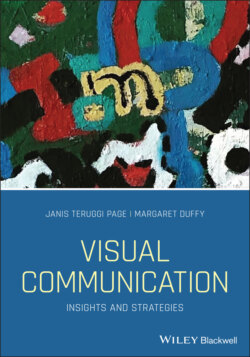Читать книгу Visual Communication - Janis Teruggi Page - Страница 23
Polysemy
ОглавлениеDifferent images, words, and even different fonts carry cultural meanings that may resonate or puzzle, anger or offend. These differences in meaning and interpretations are called “polysemy,” quite literally “multiple meanings.” These multiple and shared meanings shape our culture and how we understand our world. When most people hear the word “culture” they tend to think of fine arts, opera, or esoteric French films. In this book, when we refer to visual culture, we're talking about “the total way of life of a people … the social legacy the individual acquires from his group” and “a way of thinking, feeling, and believing” (Kluckhorn, 1973, in Geertz, p. 3).
Along the same lines, renowned scholar Raymond Williams (1958/1993) suggested in his foundational essay that culture is ordinary. By that he meant that we should not think of culture as simply artifacts or materials that people in a society make, whether they're smartphone photos, paintings, or Photoshopped memes. While these are part of culture creation, cultures are also created in our actions and practices in everyday life, as we individually and collectively assign meaning and morality to what we do, say, and communicate. Similarly, Clifford Geertz argued:
Believing, with Max Weber, that man [sic] is an animal suspended in webs of significance he himself has spun, I take culture to be those webs, and the analysis of it to be therefore not an experimental science in search of law but an interpretive one in search of meaning.
(Geertz, 1973)
This helps us think of our world not as something fixed, static, and “out there,” but as something we are actively creating as we interact with each other, with media, and face‐to‐face. The expectations and strictures of our cultures establish our identities and our places in society and lead us to judge what is valued and what is deplored, and make us evaluate what is worthy and unworthy. This doesn't mean that there's no “real” reality out there, but it does mean that in social life and our interactions, we socially construct the meanings of that reality.
In pre‐Internet 1990, Walter Anderson wrote that in society, the “mass media make it easy to create and disseminate new structures of reality” (p. 9). We as individuals now don't need special tools and training to alter and edit videos, photos, and images of all kinds. Those with more skills can create entire worlds peopled by highly realistic images of individuals and environments as seen in games like the Grand Theft Auto series and Madden NFL. Some wearable technologies put the user “into” realistic 3D environments where they can “walk” through rooms, “drive” on simulated roads, and “shop” virtual products.
Semioticians, people who study the science of signs and their meanings, argue that all of the things human beings construct or create are “containers of meaning” (Anderson, 1990, p. 21). Thus, everything we use and wear from the shoes we choose to the ways we decorate our homes carries meaning both to the wearer/user and to those around us. Anderson suggests, “all the T‐shirts and jeans and sneakers … are not only things but ideas” (p. 21) and they all may be studied as cultural facts and activities (Eco, 1978). For example, someone wearing a T‐shirt with the message “I hate T‐shirts” may be sending a message meant to be ironic or jokey. A man wearing a blue blazer and khakis may be sending a message that “I'm a guy who knows what's appropriate to wear to work.” Or a small boy donning a straw hat, bandana, and strung‐up tube toys may be sending the message, “I'm a cowboy today” (Figure 1.2). In addition, memes, Photoshopped photos, social media photos, nine‐second videos, and emojis carry, in their form and content, ideas and values.
Because we're immersed in a world of many messages or representations, many of them visual, we can see that our social worlds are constantly under construction through our interactions with images. Rose (2012) uses the term “scopic regime” and defines it as “the ways in which both what is seen and how it is seen are culturally constructed” (p. 2). Visual culture is often criticized as turning society and human life into a spectacle and that the move from analog to digital culture not only allows for endless replication, but itself is different and worse than, say, traditional photography. Thus, Rose concludes, “The modern connection between seeing and true knowing has been broken” (p. 4).
Figure 1.2 Everything we use and wear carries meaning.
